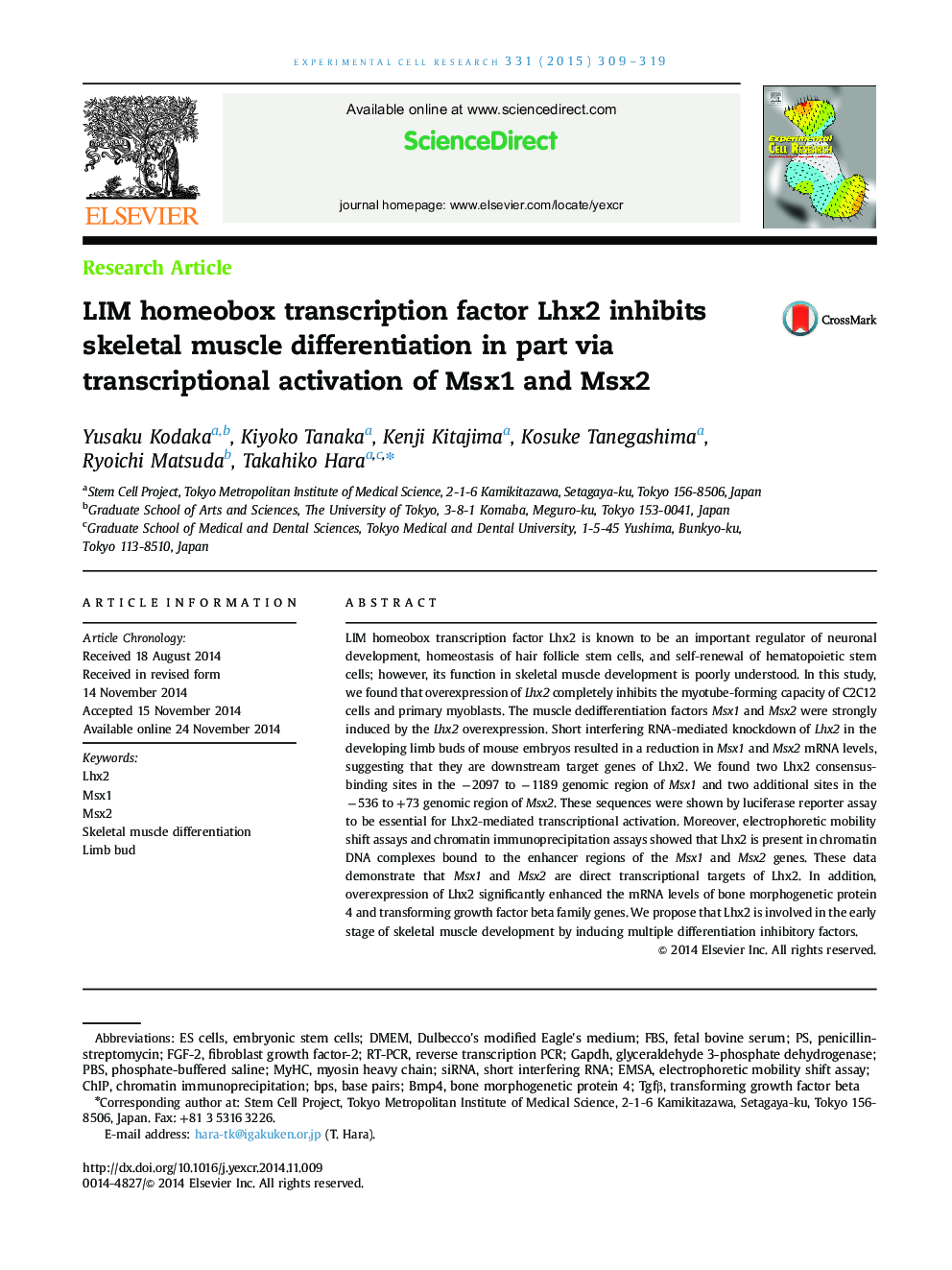| Article ID | Journal | Published Year | Pages | File Type |
|---|---|---|---|---|
| 10903815 | Experimental Cell Research | 2015 | 11 Pages |
Abstract
LIM homeobox transcription factor Lhx2 is known to be an important regulator of neuronal development, homeostasis of hair follicle stem cells, and self-renewal of hematopoietic stem cells; however, its function in skeletal muscle development is poorly understood. In this study, we found that overexpression of Lhx2 completely inhibits the myotube-forming capacity of C2C12 cells and primary myoblasts. The muscle dedifferentiation factors Msx1 and Msx2 were strongly induced by the Lhx2 overexpression. Short interfering RNA-mediated knockdown of Lhx2 in the developing limb buds of mouse embryos resulted in a reduction in Msx1 and Msx2 mRNA levels, suggesting that they are downstream target genes of Lhx2. We found two Lhx2 consensus-binding sites in the â2097 to â1189 genomic region of Msx1 and two additional sites in the â536 to +73 genomic region of Msx2. These sequences were shown by luciferase reporter assay to be essential for Lhx2-mediated transcriptional activation. Moreover, electrophoretic mobility shift assays and chromatin immunoprecipitation assays showed that Lhx2 is present in chromatin DNA complexes bound to the enhancer regions of the Msx1 and Msx2 genes. These data demonstrate that Msx1 and Msx2 are direct transcriptional targets of Lhx2. In addition, overexpression of Lhx2 significantly enhanced the mRNA levels of bone morphogenetic protein 4 and transforming growth factor beta family genes. We propose that Lhx2 is involved in the early stage of skeletal muscle development by inducing multiple differentiation inhibitory factors.
Keywords
PBSEMSAMsx2Lhx2MyHCMSX1FGF-2BPSBMP4RT-PCRTGFβGAPDHDMEMFBSDulbecco׳s modified Eagle׳s mediumshort interfering RNAsiRNAElectrophoretic mobility shift assaychromatin immunoprecipitationTransforming Growth Factor BetaSkeletal muscle differentiationbase pairsLimb budreverse transcription PCRMyosin heavy chainfetal bovine serumES cellsEmbryonic stem cellsfibroblast growth factor-2Phosphate-buffered salinebone morphogenetic protein 4Penicillin-streptomycinCHiPglyceraldehyde 3-phosphate dehydrogenase
Related Topics
Life Sciences
Biochemistry, Genetics and Molecular Biology
Cancer Research
Authors
Yusaku Kodaka, Kiyoko Tanaka, Kenji Kitajima, Kosuke Tanegashima, Ryoichi Matsuda, Takahiko Hara,
